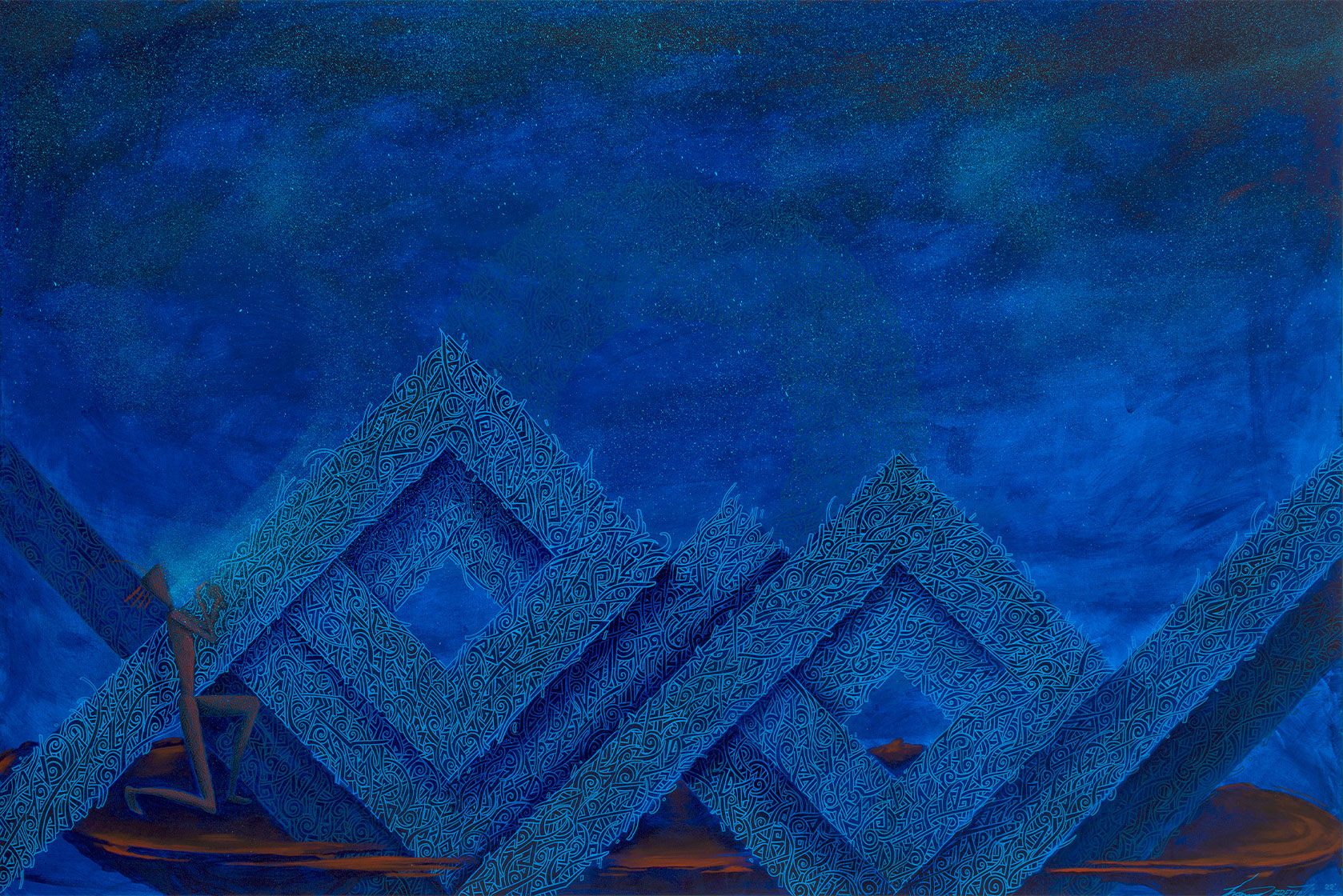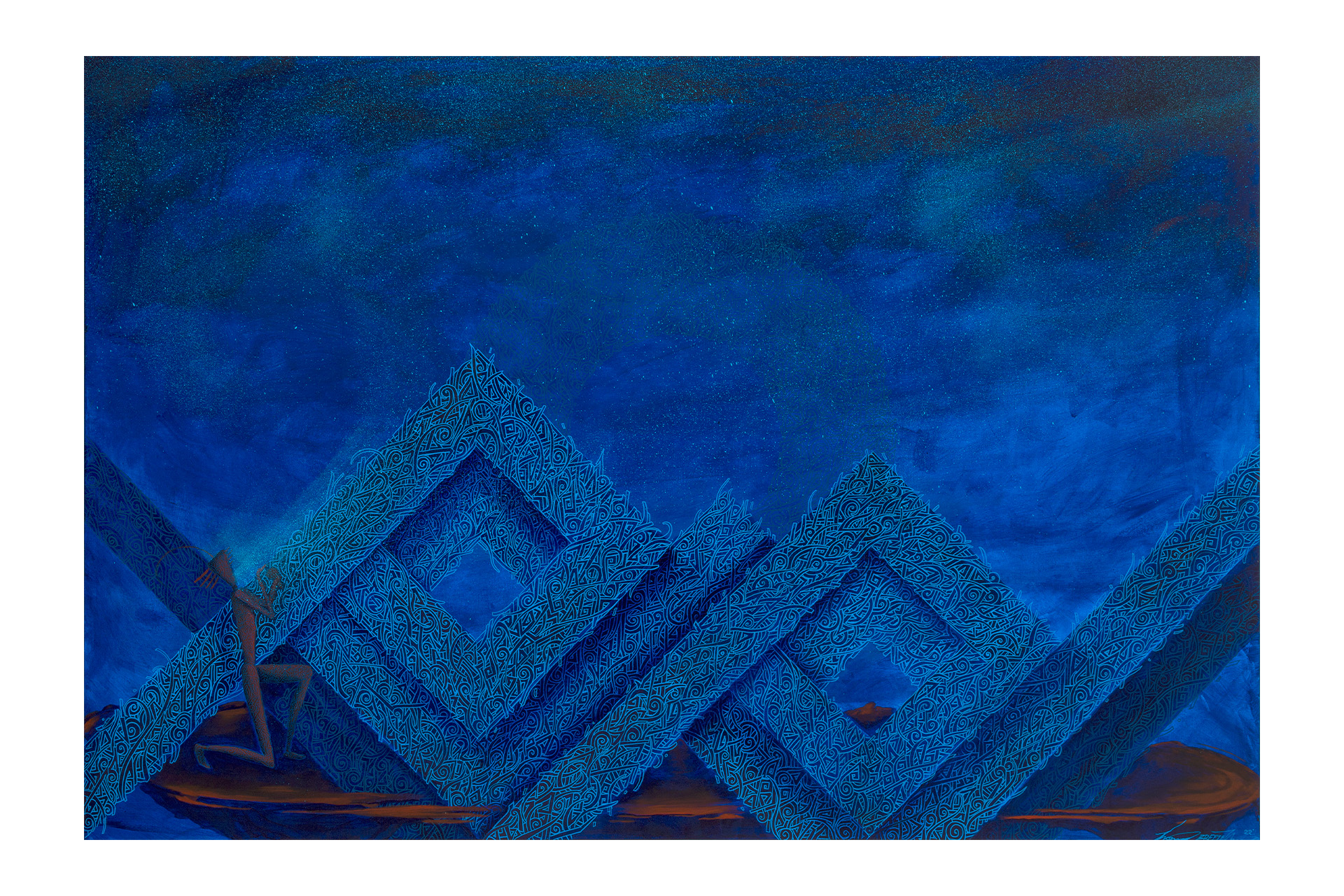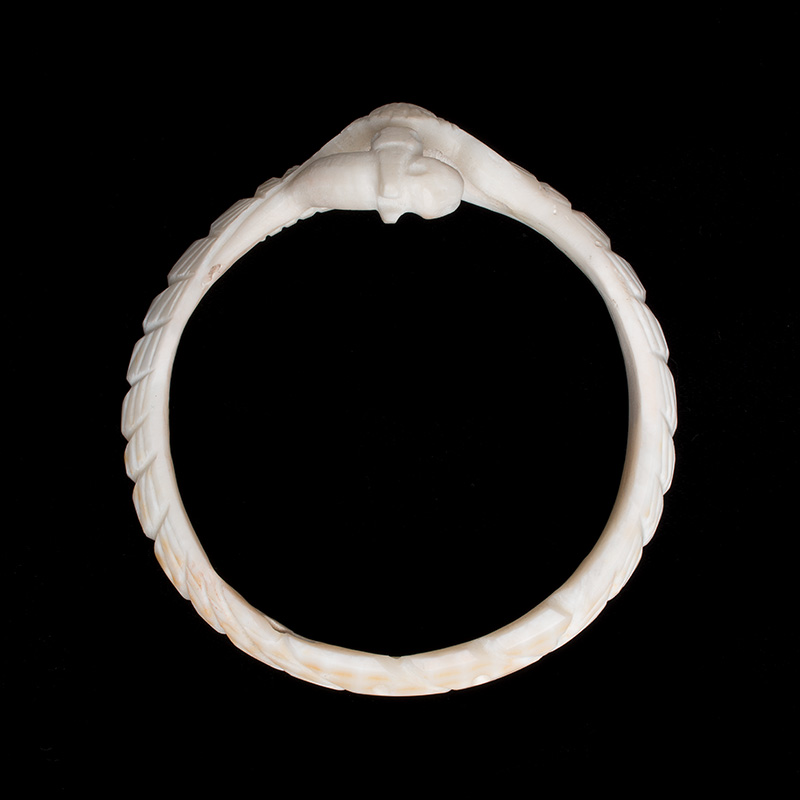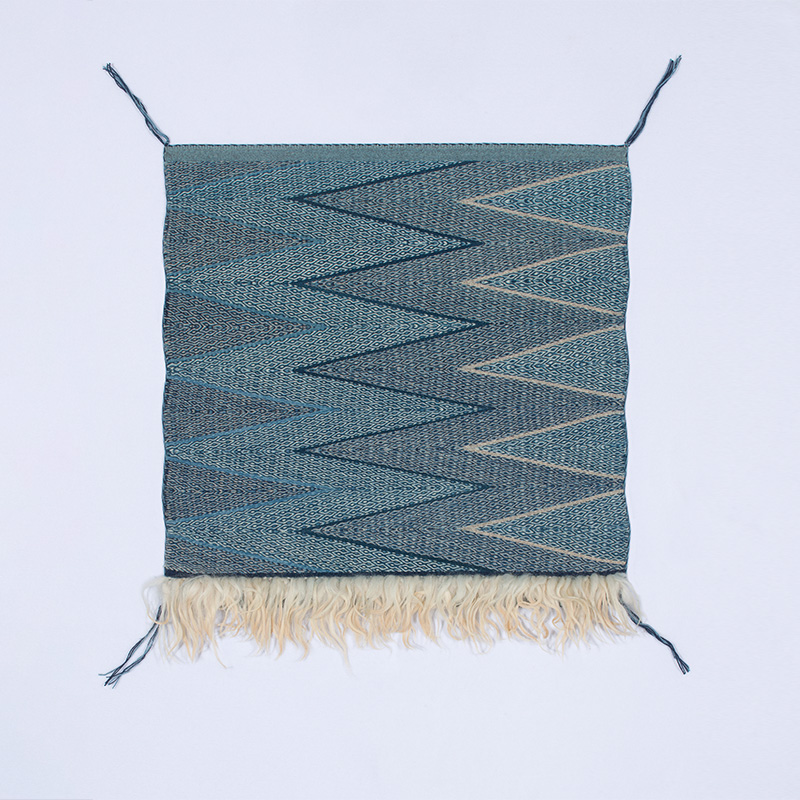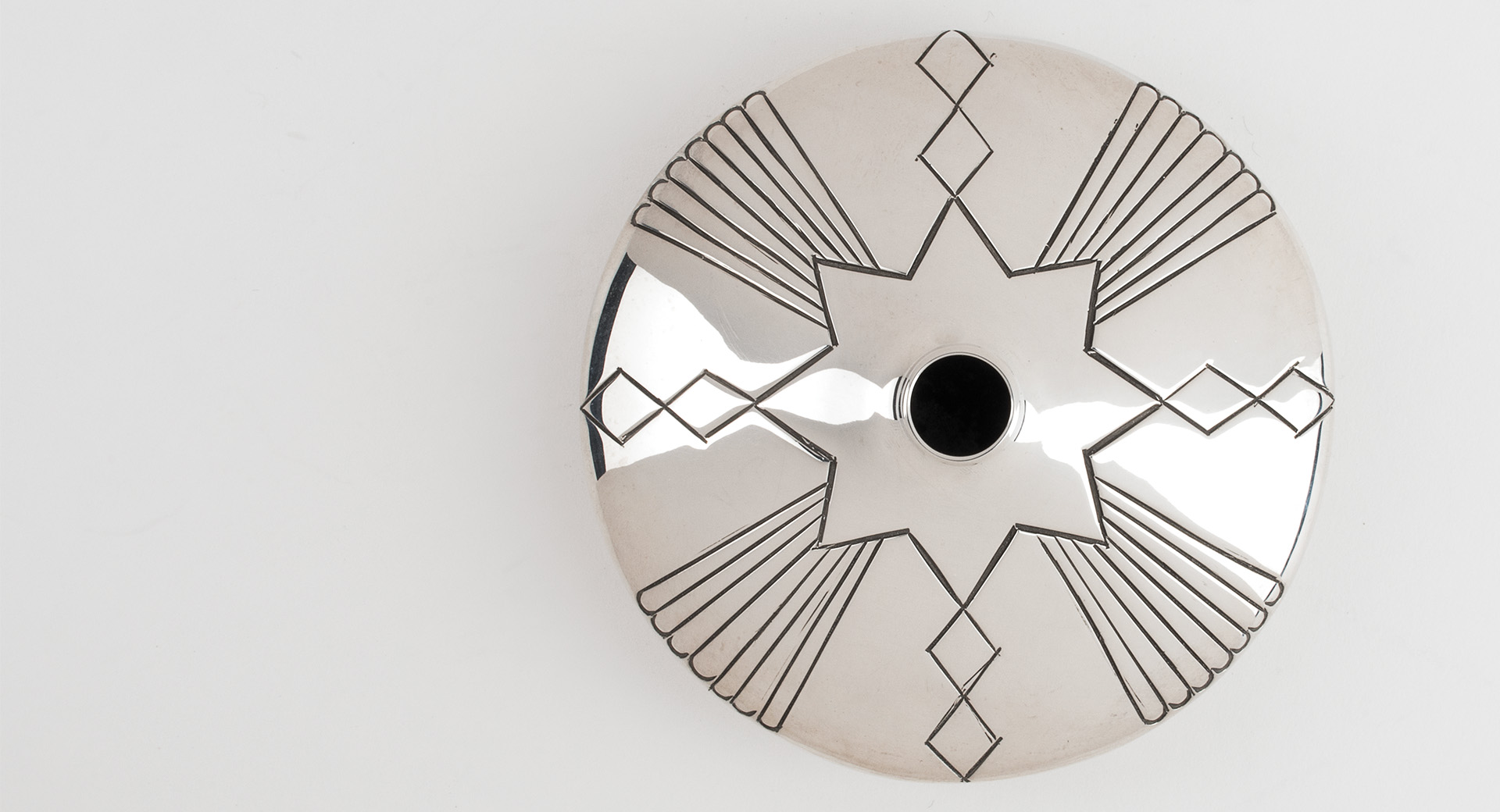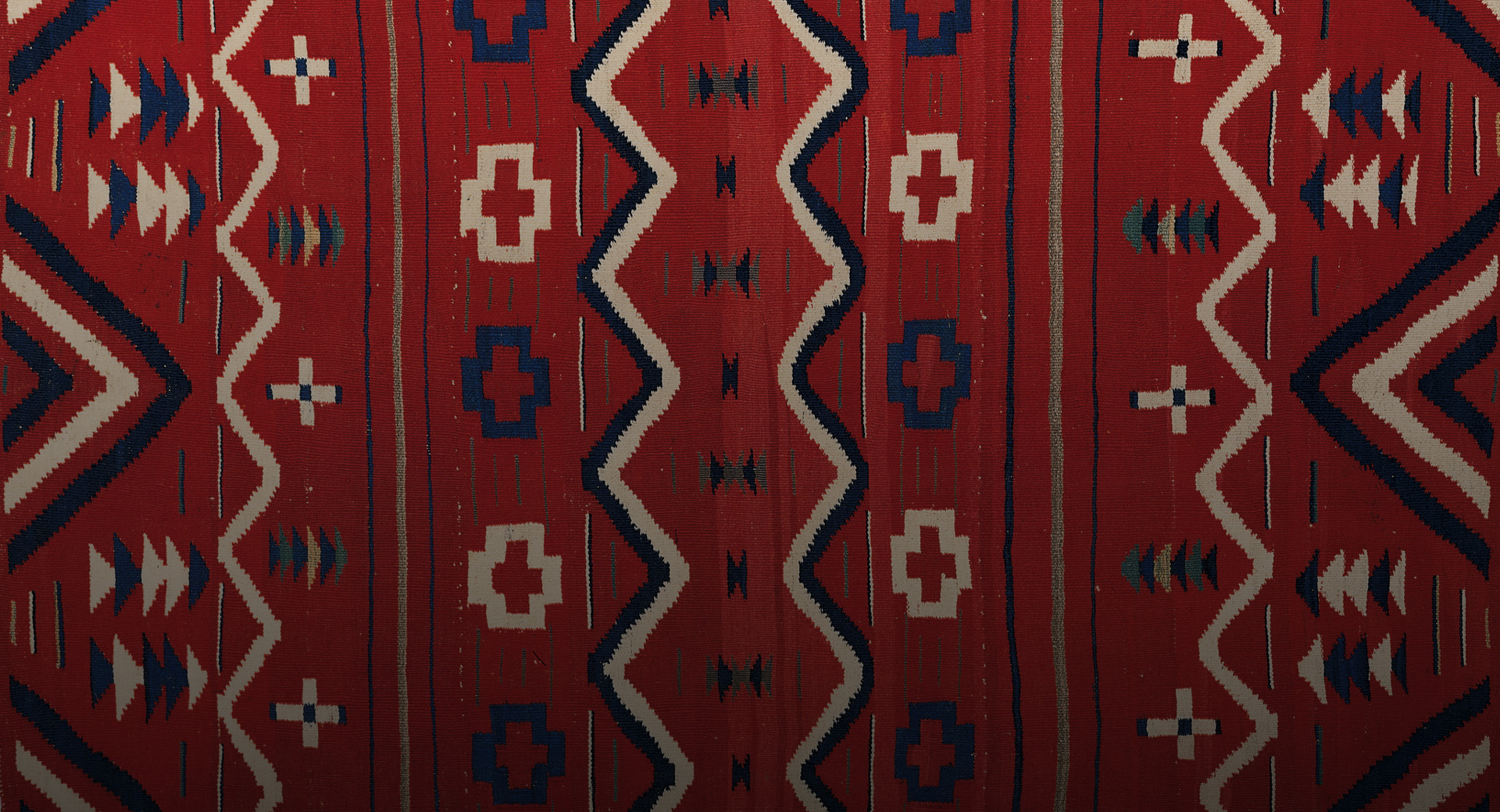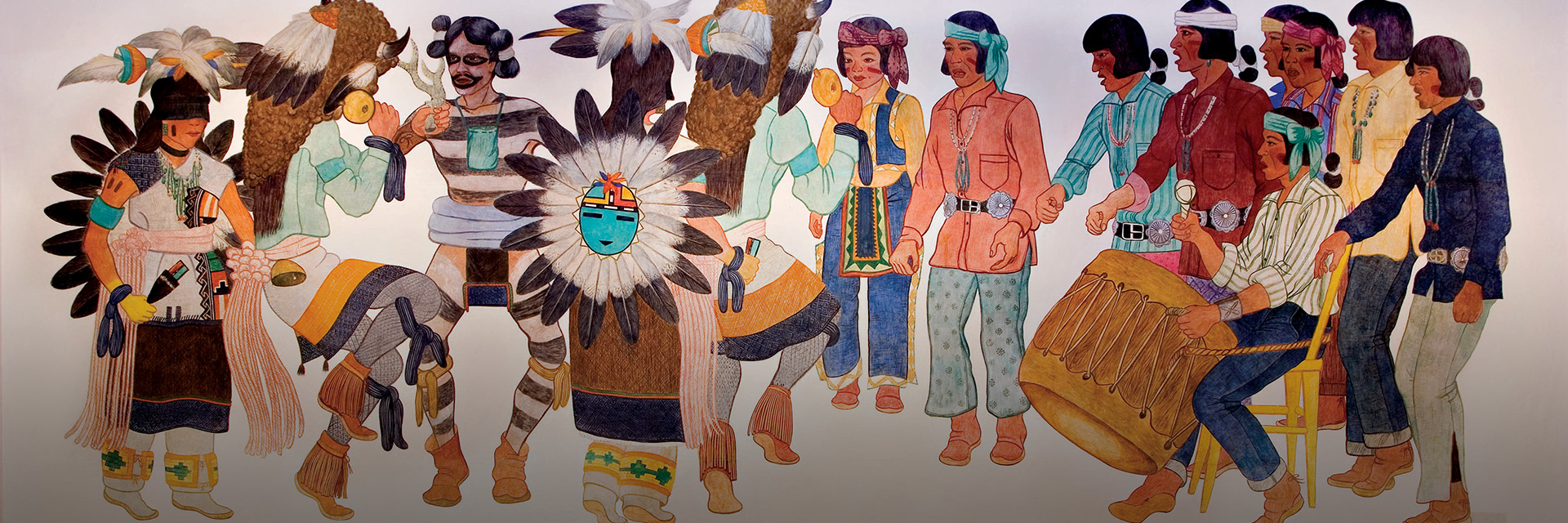Velma Kee Craig, assistant curator
Substance of Stars opened on Nov. 6, 2022. This exhibition shares the creation stories that form the foundational knowledge systems and inspire artistic production for the Haudenosaunee, Yup’ik, Diné, and Akimel O’otham nations. The exhibition examines the collection of the Heard Museum from Indigenous perspectives of their own cultural production across a variety of media. It incorporates Indigenous languages, knowledge, and spiritual values as well as the foundational origin stories and sky knowledge that figure prominently in the national identities of Indigenous peoples. For this exhibition, the Heard has acquired new works by contemporary Indigenous artists. These include works by Marie Watt (Seneca), Thomas “Breeze” Marcus (Tohono O’odham), Jacob Butler (Akimel O’otham), Dwayne Manuel (Onk Akimel O’odham), Kevin Aspaas (Diné), and Sally Black (Diné).
Marie Watt’s Companion Species (Blazing for Everyone) is composed of two canvas panels, each measuring 35 inches high and 172 inches wide. When the piece is exhibited, the panels are meant to be arranged so they form the phrase “Turtle Island,” which Watt grew up to know as a “Seneca and Haudenosaunee understanding of place and creation.” Different Indigenous communities may use Turtle Island to refer to the continent of North America or the planet Earth. Watt has created several pieces which turn the spotlight on this phrase. She states, “Indigenous people are often expected to translate stories, memories, and knowledge to those outside our communities. By boldly ‘stitching’ the words TURTLE ISLAND and placing them in unexpected sites, I subvert expectation.” For Watt, recognition of a place name “that preceded colonial names … can be a step toward acknowledging historical trauma and a legacy of extraction and displacement.”
Stars Over Ce:dagi Wahia by Thomas “Breeze” Marcus illustrates the moment in the O’odham creation story when Jewed Ma:kai (Earth Doctor) creates the stars, by scooping up a handful of water and blowing it up into the sky. The water droplets froze into crystals, which became the stars. In another version of the same story, Jewed Ma:kai throws tepary beans into the sky to make the stars. This is true for the creation stories of other cultures, as well; there can be many variations of the same story. The versions shared within Substance of Stars are the ones known to or preferred by the cultural advisors we’re working with or the artists whose works are represented in the exhibition.
Jacob Butler’s two bracelets delicately carved from Glycymeris shells are nearly identical. One is slightly larger in diameter, at 3½ versus 3¼ inches. The wings of the crane extend outward from its head to form the circular shape of the bracelet. Clasped within the crane’s beak is the neck of a rattlesnake, resigned to its fate. It is now food.
The bracelets are one piece. There are no seams, as the artist worked from a large Glycymeris shell and carefully removed the interior of the bracelet to create a hole to fit the wearer’s arm. After that, Butler carved the intricate details to create the gripping scene of crane overcoming rattlesnake. In collaboration with Thomas “Breeze” Marcus and Jacob Butler, artist Dwayne Manuel has composed a scene that expresses another moment of the O’odham Creation story, when Jeved Ma:kai pointed his staff into the stars he created, and spun them to form the Milky Way galaxy. In Marcus’s painting, our perspective is drawn from a point of view low to the ground, looking up from the position of Jeved Ma:kai’s feet into the center of the galaxy above. While invisible to the scene, the presence of the Earth is keenly felt, reminding the viewer of the profound interconnection of Earth and Sky, the terrestrial and celestial, created at the same moment.
New Acquisitions from Substance of Stars
Horned Toad and Lightning by Kevin Aspaas represents the second time this Diné weaver has woven a textile utilizing the combined techniques of wedge weave and twill. The textile is dyed with rabbitbrush and various shades of indigo. It has a fringed bottom edge, which was created using the wool tufting technique. The grey and blue zigzag stripes symbolize Lightning, and the broken diamond twill design represents the natural armor worn by Horned Toad. In his artist statement, Aspaas notes, “Navajo stories talk about the fight between Lightning and Horned Toad. Lightning challenged every living being and won each time. Everyone was scared, but Horned Toad was not. Horned Toad challenged Lightning. He was struck four times but was not affected. His flint armor protected him.”
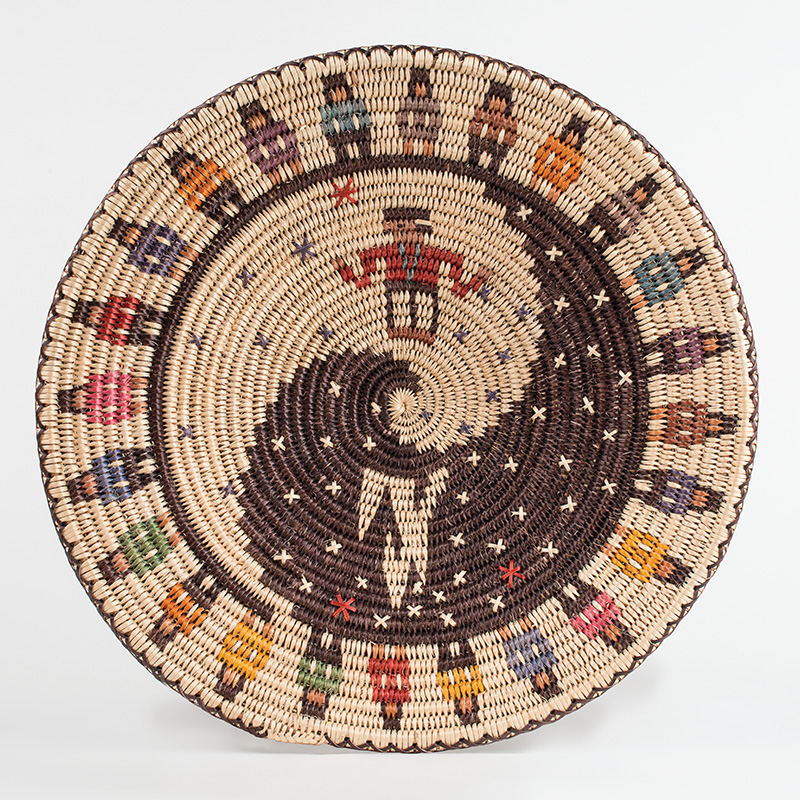
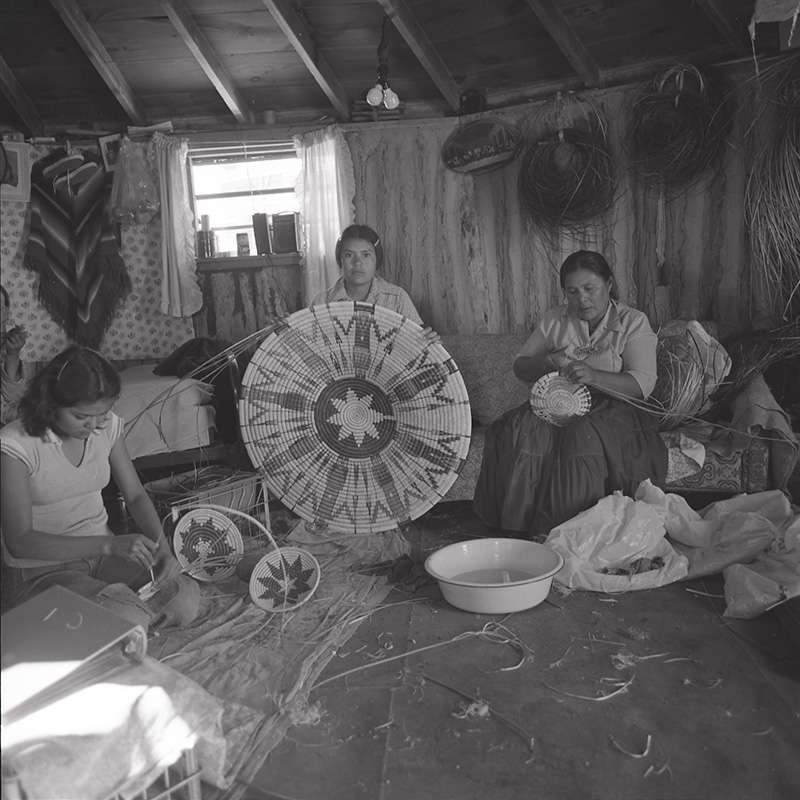
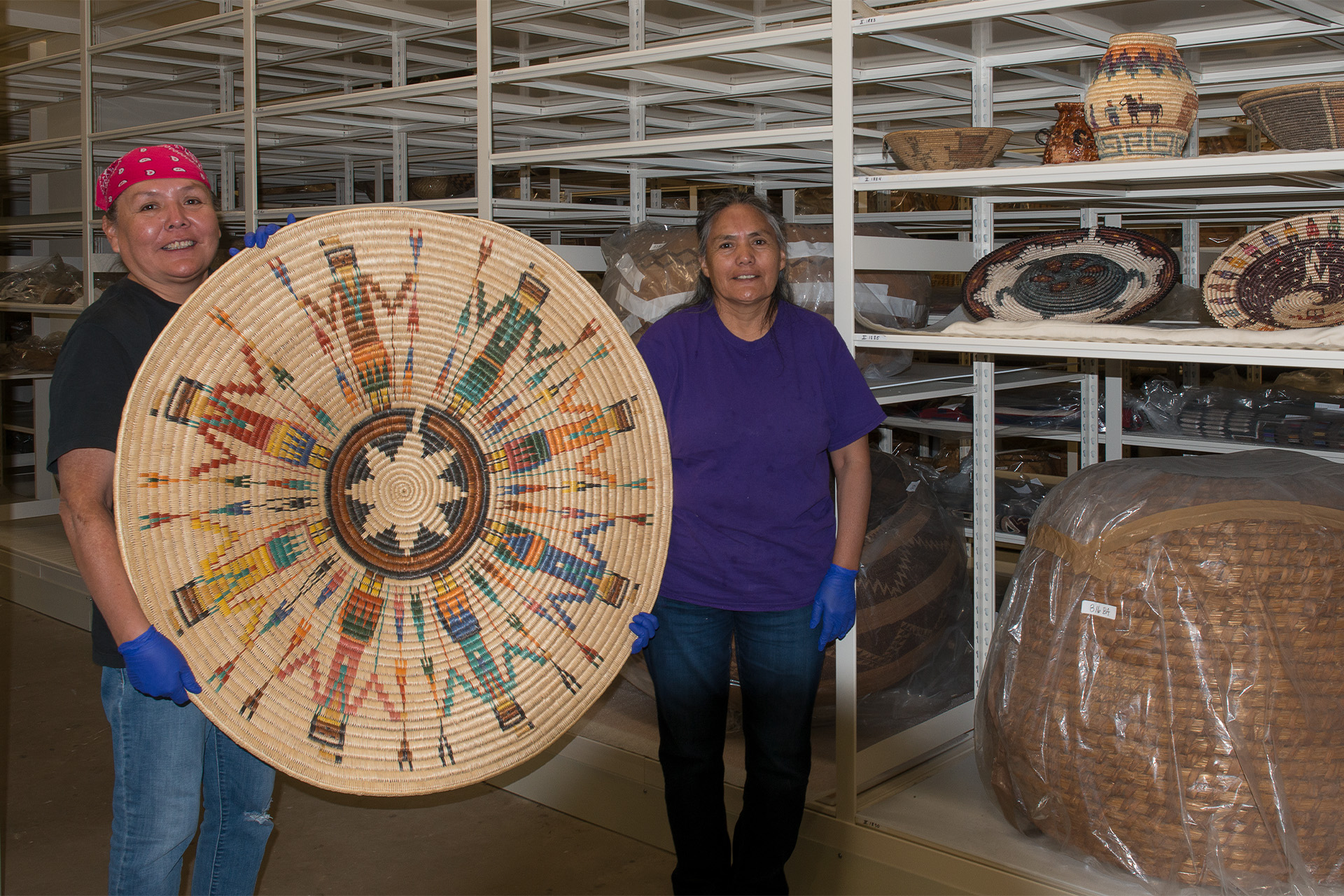
Substance of Stars is guest curated by Sean Mooney and Chuna McIntyre (Central Yup’ik,) with advisory support from Josephine Aloralrea (Cup’ik, Nunivak Island), Vernon Chimegalrea (Central Yup’ik), Jamie Jacobs (Seneca), Michael Galban (Mono Lake Paiute), Thomas Porter (Mohawk), Ainsley Jemison (Seneca), Marie Watt (Seneca), Velma Kee Craig (Diné), Manuelito Wheeler (Diné), Steven Yazzie (Diné/Laguna Pueblo/Anglo), Orlando White (Diné), Barnaby Lewis (Akimel O’otham), David Martinez (Akimel O’odham/Hia Ced O’odham/Mexican) and Jacob Butler (Akimel O’otham). The Heard Museum is delighted to have these newly acquired works for the exhibition, and we offer many thanks to the creators of these beautiful works and the stories that they enable the exhibition team to share with our viewers.
